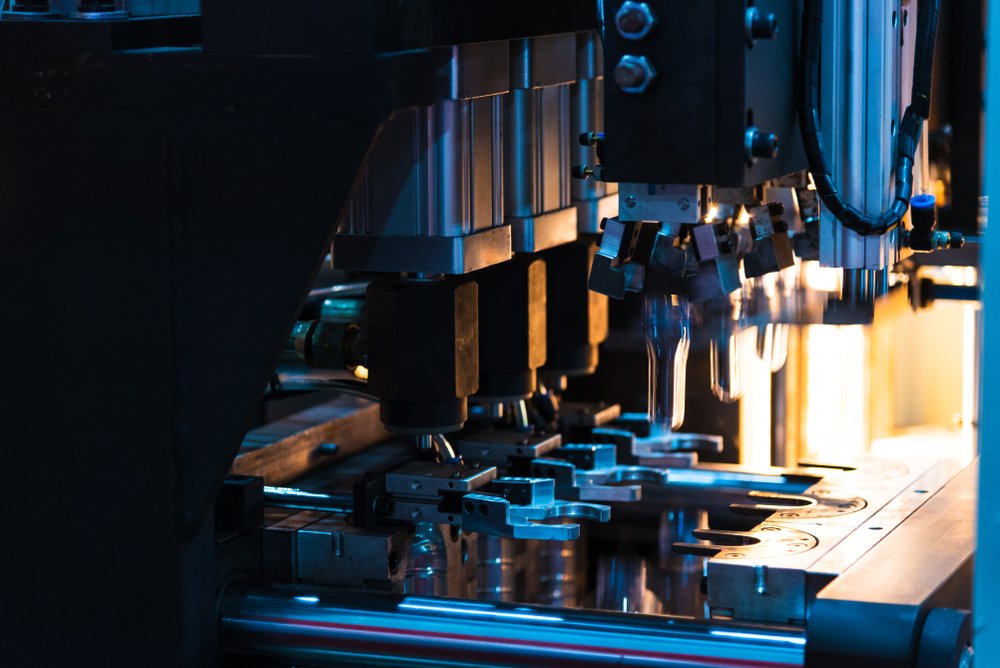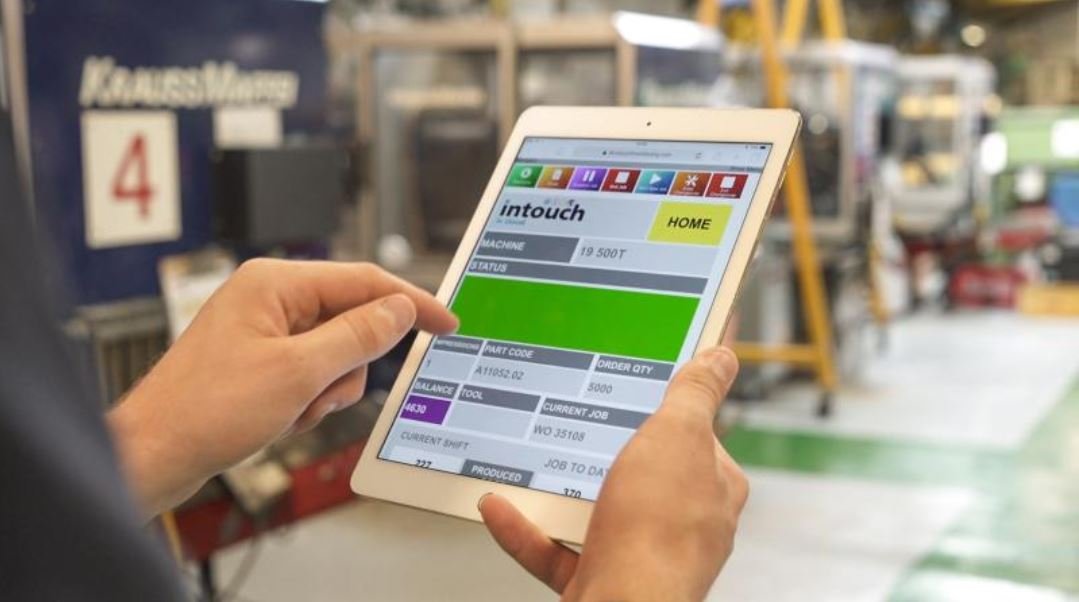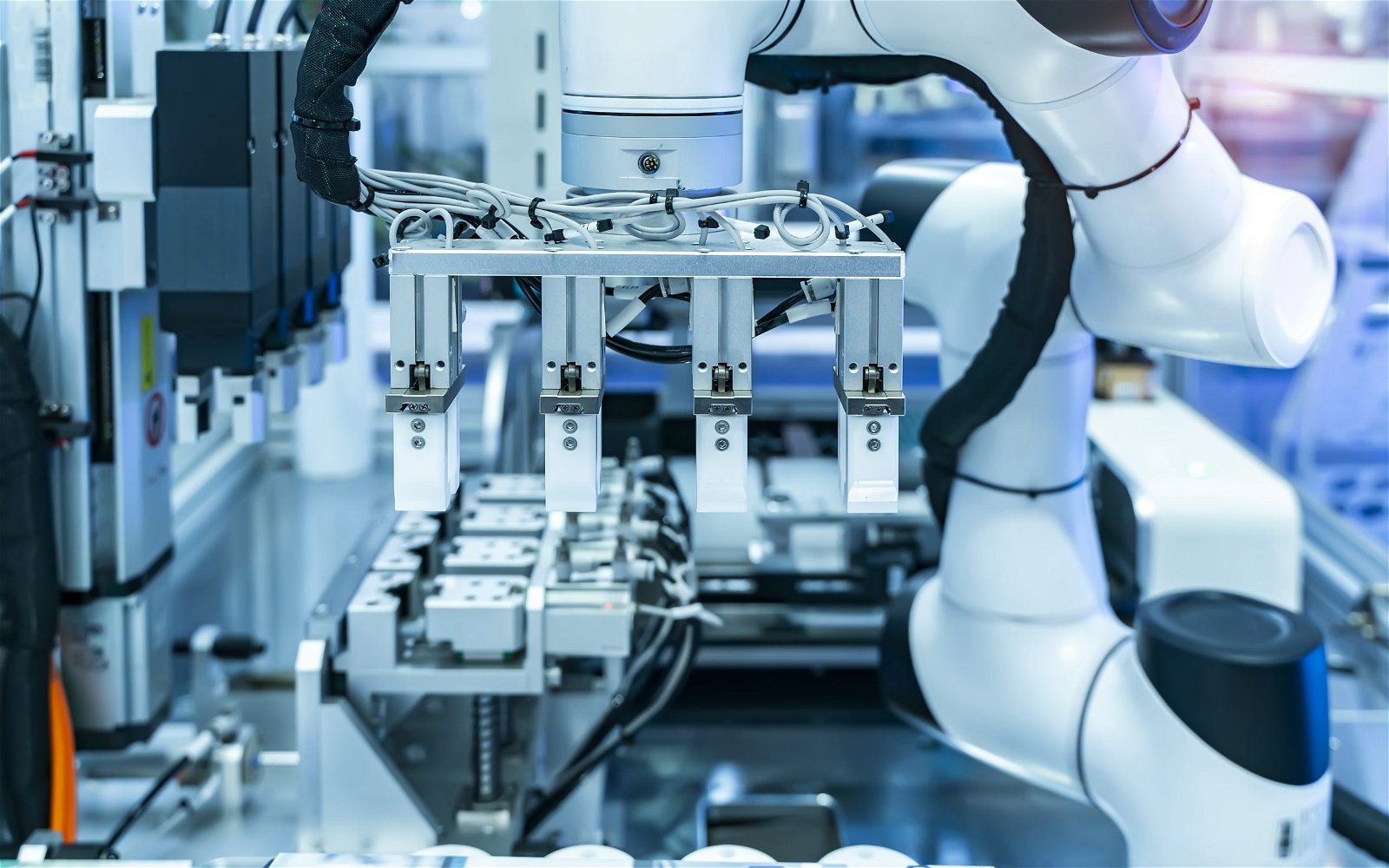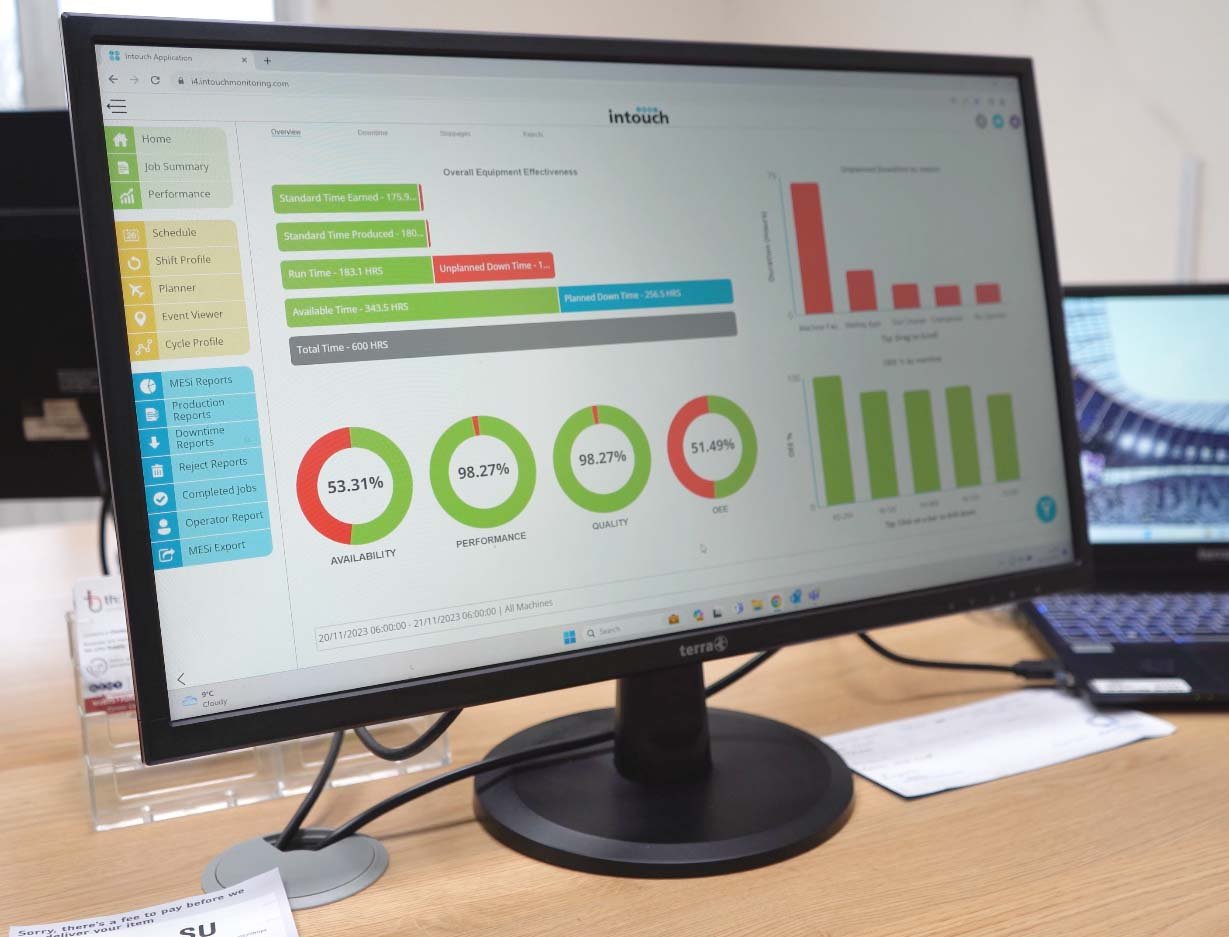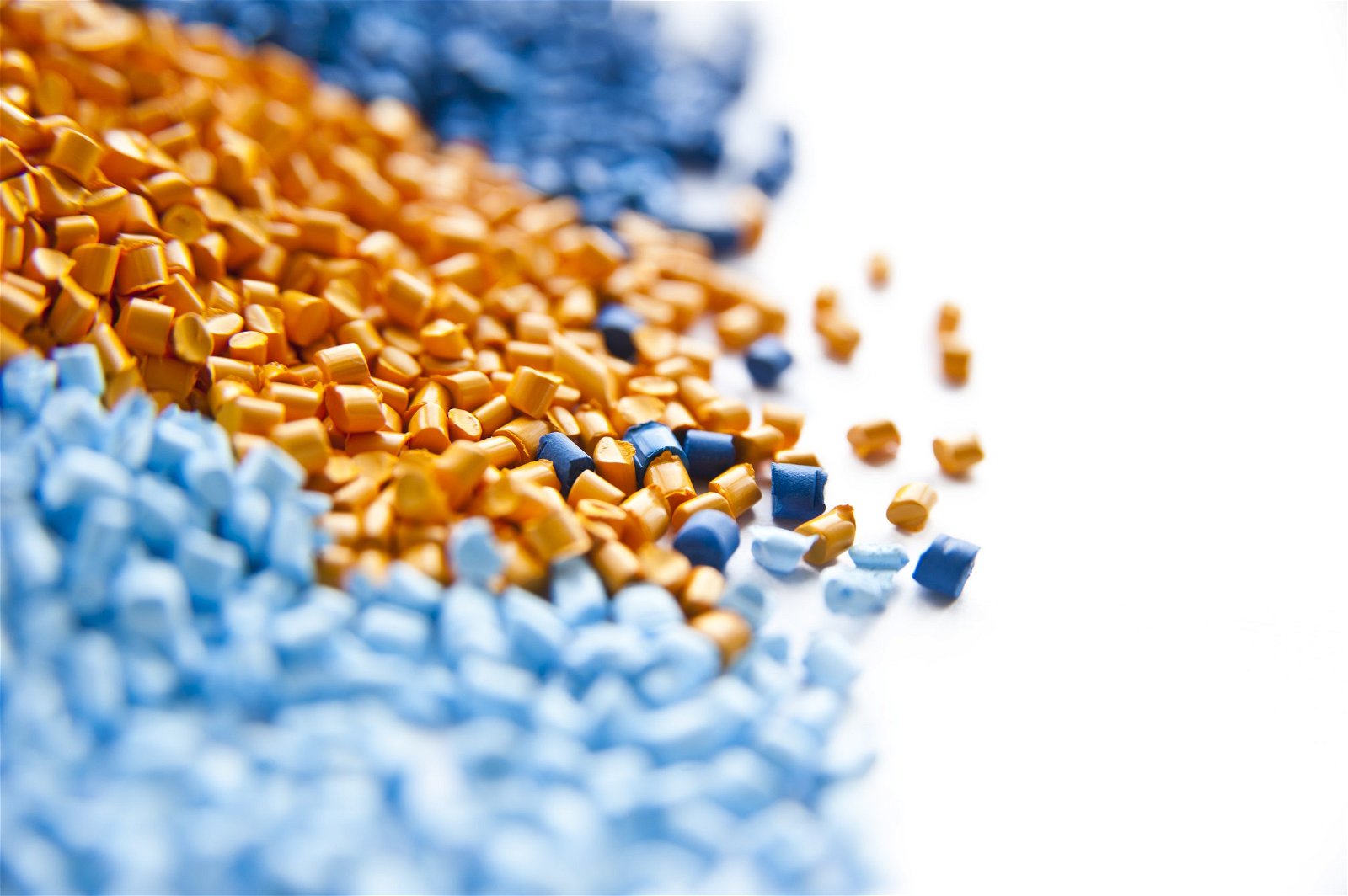5 simple ways to increase Manufacturing Efficiency for Plastic Molders

Todays manufacturing landscape is fast-paced and highly competitive. The pressure to increase efficiency is higher than ever.
Plastic molders are under constant pressure to improve production efficiency, reduce operational costs, and maintain consistent quality. Small changes to the production process can lead to significant gains in output and profitability. Below are five practical and proven strategies that can help you increase manufacturing efficiency in your plastic molding operations.
1. Eliminate Scheduling Bottlenecks to increase Manufacturing Efficiency
One of the most common sources of inefficiency in plastic molding facilities is poor production scheduling. When jobs are rushed or schedules are not adjusted in real time, the result is often delays, misallocated resources, and missed deadlines.
Implementing an automated scheduling system is one of the simplest ways to streamline operations. These systems give you real-time visibility into job progress, machine availability, and material readiness, allowing you to make adjustments on the fly. Prioritising jobs based on customer deadlines and ensuring that materials are available before production starts can dramatically improve flow and reduce last-minute disruptions. By smoothing out bottlenecks, you gain better control over lead times and resource allocation.
Actionable Steps:
- Implement automated scheduling software: These tools can reduce human error and increase scheduling precision. By tracking real-time data, it becomes easier to adjust for unforeseen circumstances and optimize labor allocation
- Prioritize jobs based on deadlines: Understand your customers’ priorities and adjust schedules accordingly. This ensures that urgent orders are completed on time without disrupting ongoing work
- Monitor material readiness: Ensure that raw materials are available when needed to avoid waiting for deliveries or rescheduling jobs due to material shortages
By reducing bottlenecks in scheduling, you can significantly improve production efficiency and reduce costs associated with missed deadlines or rework.
2. Reduce Downtime
Unplanned downtime—from equipment breakdowns, changeovers, or maintenance delays—can quickly erode productivity. Each minute that a molding machine isn’t running represents lost potential and increased costs, especially when dealing with high-output or high-cost machinery.
Manufacturers tell us that machine downtime is one of the biggest contributors to lost productivity in plastic molding operations. Whether it’s due to unplanned maintenance, machine malfunctions, or changeovers, downtime can wreak havoc on efficiency, especially when machines are expensive to operate and maintain.
Why it Works: Reducing downtime not only increases machine utilisation but also ensures that your team is focused on value-adding activities instead of waiting for equipment to be repaired or reset. Effective downtime management leads to smoother production cycles and better overall efficiency.
Actionable Steps:
- Implement preventive maintenance: A proactive maintenance schedule can help identify potential issues before they result in costly breakdowns. Regular checks, lubrication, and replacing worn-out parts on time can extend machine life and prevent unplanned downtime
- Monitor machine performance: Use machine monitoring tools to track performance and identify inefficiencies. These systems can alert operators when machines are not performing optimally, allowing for quick adjustments
- Streamline changeover processes: Changeovers, especially in plastic molding, can take a considerable amount of time. Reducing the duration of these changeovers through proper tooling, pre-setup procedures, and team training can keep production moving efficiently
By actively managing downtime and preventing unnecessary delays, manufacturers can improve the overall efficiency of their operations and increase throughput.
3. Improve product quality
Consistently delivering high-quality products is a must for staying competitive in the plastics industry. Inefficient quality control can lead to high scrap rates, rework, and ultimately, dissatisfied customers. Improving product quality is not just about maintaining standards; it’s also a significant way to drive efficiency by reducing waste and costly reprocessing.
Why it Works: Incorporating quality at every stage of production minimises defects and eliminates the need for rework. When you focus on improving product quality, you reduce the time spent fixing problems, reduce material waste, and ultimately improve throughput.
Actionable Steps:
- Use in-line inspection systems: Incorporate automated inspection tools that can detect defects in real-time. For example, systems that use vision sensors can catch issues like flash, short shots, or part misalignment before they become larger problems
- Implement statistical process control (SPC): By monitoring key production variables, you can detect trends that may indicate a problem with the molding process before defects occur. SPC helps identify when adjustments need to be made to prevent defects and maintain product consistency
- Standardize processes and materials: Inconsistent processes or raw materials can lead to quality issues. By standardising materials and refining processes, you can reduce variability and improve product quality
Focusing on quality at every step of production helps reduce the need for rework and improves overall efficiency by ensuring that the first part is a good part.
4. Monitor cycle time and machine performance
Understanding how well your machines are performing is essential for maintaining consistent productivity. In the plastic molding industry, cycle time is a critical metric, as even small delays or inefficiencies in cycle time can add up to significant losses in output over time.
Why it Works: Monitoring machine performance and ensuring adherence to cycle time ensures
that every machine is operating at its optimal capacity. By keeping track of this data, you can identify inefficiencies and make necessary adjustments to keep production on track.
Actionable Steps:
- Use machine monitoring systems: Real-time monitoring software can provide valuable insights into machine performance, highlighting when cycle times deviate from the norm. This can help detect inefficiencies such as mold wear, inconsistent injection speeds, or improperly calibrated equipment
- Set benchmark cycle times: Establish ideal cycle times for each machine and production line. Monitor performance regularly and look for areas where cycle times can be reduced without sacrificing quality
- Perform root cause analysis: When cycle times exceed benchmarks, conduct root cause analysis to determine what is causing the delay. Addressing underlying issues can lead to significant improvements in cycle time
By optimising machine performance and sticking to cycle times, manufacturers can boost throughput and maximise machine utilisation, driving overall efficiency.
5. Digitize the factory floor for operator efficiency
Human error and manual processes can lead to inefficiencies in any manufacturing environment. In the case of plastic molders, paper-based systems for tracking orders, material usage, and production data can slow down operations and increase the chance of errors.
Why it Works: By going paperless, operators can access real-time data, track production metrics instantly, and reduce the risk of errors. Paperless systems also make it easier to manage and share information, leading to more efficient workflows and less time spent on administrative tasks.
Actionable Steps:
- Implement mobile devices: Equip operators with mobile devices or tablets to access production schedules, machine performance data, and material inventories in real-time. This reduces time spent searching for information and allows operators to make adjustments quickly
- Adopt automated data collection: Use automated systems to capture production data, such as cycle times, temperatures, and pressures. This ensures that data is accurately recorded without relying on manual entry, freeing up operators to focus on other tasks
- Train employees on digital tools: Ensure that your team is well-trained in using digital tools for reporting and tracking. A knowledgeable workforce will adapt more quickly and be able to work more efficiently
By reducing paper-based processes and empowering operators with real-time information, you can enhance productivity and reduce inefficiencies caused by manual data entry and tracking.
Take the next step towards Operational Excellence
Increased manufacturing efficiency for plastic molders is achievable through targeted actions that address common pain points. By reducing scheduling bottlenecks, minimising downtime, improving product quality, monitoring machine performance, and increasing operator efficiency, plastic manufacturers can drive significant improvements in productivity and profitability.
Implementing these simple yet effective strategies can help you stay competitive in the ever-evolving plastics industry, allowing you to meet customer demand while optimising costs and operations.
The Intouch Monitoring platform is a fast and easy way to provide the intelligence required to help monitor and target many common bottlenecks. Contact one of our team to discuss how we can help you start your manufacturing excellence journey.
3 Signs that you are ready to digitise your factory
Are you under pressure to improve efficiencies and reduce down time, which means you’re now looking to implement smart factory technology…
Plastics Manufacturing in a volatile world
The pandemic has highlighted that the need for flexibility and adaptability in manufacturing operations is crucial for navigating…
5 ways you could improve your production efficiency right now
The importance of production efficiency cannot be overstated. It means you are making the most out of your resources – time, materials,…
Have you thought about adopting smart technology?
What's stopping you adopting smart technology in your plant? Are you worried about the costs, the expertise and training needed? What is…
The advantages of a paperless manufacturing operation
So what happens when you switch to a paperless Manufacturing Execution System? You immediately get more predictable manufacturing with more…
Why is planned downtime for maintenance so important?
Often with pressure of delivery deadlines, it is easy for planned maintenance to be pushed down the priority list and only maintain it when…
How to choose the right manufacturing execution system (MES) for you
Selecting the right MES solution will give you the data and insights necessary to optimise your OEE, give you a competitive advantage and…
What would a 1%, 5% or 30% improvement in OEE mean to you?
Are you under pressure to improve efficiencies and reduce down time, which means you’re now looking to implement smart factory technology…
How to transform your plant’s efficiency and profitability with MES
Squeezing everything from your resources without compromising on quality is a challenge increasingly faced by manufacturers. So how can…
How it works
Getting started with Intouch is as easy as 1, 2, 3
1. Book a demo
Let us show you what we can do. Jump on a demo call and our friendly team will take you through the Intouch system and answer any questions you might have.
2. Enjoy a free trial
Don’t just take our word for it! We’ll lend you our technology for a 60-day free trial so you can see exactly how it can benefit the everyday operation of your business.
3. Receive ongoing support
It doesn’t end there. If you decide Intouch is the right production monitoring system for you, we’ll work with you to help you take control and make significant improvements in OEE.


